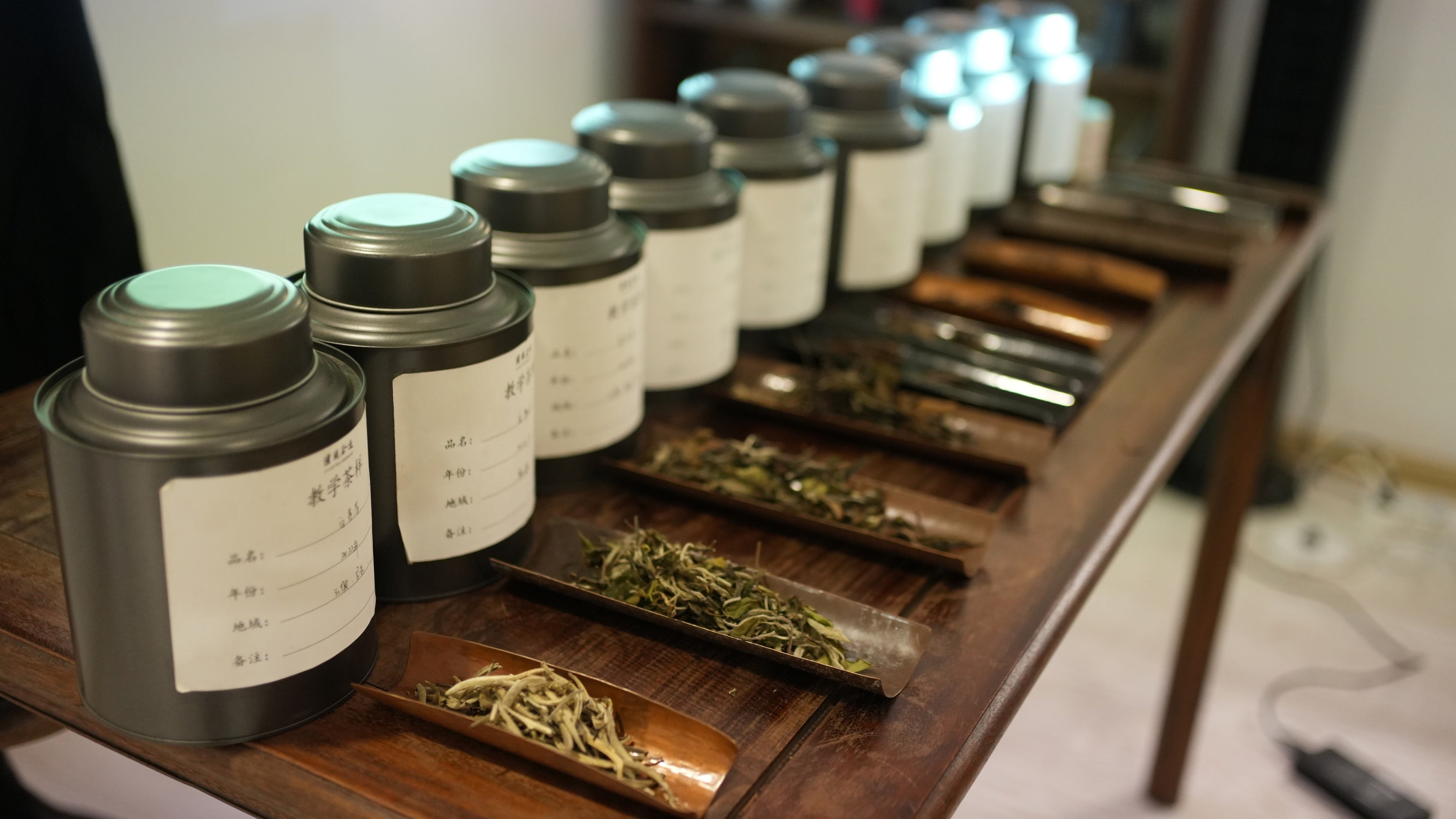Quickly get up to speed on tea with this comprehensive guide.
Most of us drink tea without thinking twice. It’s in our pantry, our bubble tea orders, and our favourite cafes. But did you know that all real tea—whether it's Matcha, Earl Grey, or Oolong milk tea—comes from the same plant?
Meet Camellia sinensis.
For anyone who's ever felt overwhelmed by the complexities of tea – you only need to know 6 types

So... what actually makes these teas different?
Understanding these six unlocks an entire universe of flavour, tradition, and culture.
The secret lies in how the leaves are processed.
The more oxidised, the darker and richer the tea.
The less oxidised, the fresher and greener it tastes.
That’s what creates the six legendary categories of Chinese tea.

Meet the Six
Here's your essentials:
1. Green Tea (绿茶)
Spring mornings in a cup.
- How It’s Made: Tea leaves are quickly heated to stop oxidation. Freshness - locked.
- What It Tastes Like: Crisp, light, nutty, fresh, and umami. Great iced or hot.
- Classic Variants:
- Longjing (Dragon Well) – the Longchamp of teas
- Biluochun – delicate spirals from Jiangsu
- Maofeng – classic leaf-and-bud style from Henan
- Where It’s Grown: Eastern China – Zhejiang (Hangzhou), Jiangsu (Suzhou), Anhui (Huangshan)
- Fun Fact: Longjing #43 is a national clone.
2. White Tea (白茶)
Barely processed, an ethereal whisper of tea.
- How It’s Made: Naturally withered and dried—minimal handling, maximal purity.
- What It Tastes Like: Delicate, sweet, a bit like wildflowers.
- Classic Variants:
- Silver Needle (Baihao Yinzhen) – slender buds, pretty and premium
- White Peony (Bai Mudan) – bolder with a floral finish
- Where It’s Grown: Fujian (Fuding), Yunnan
- Fun Fact: After aging, it helps slow aging.
3. Yellow Tea (黄茶)
The rarest type, a hidden tea.
- How It’s Made: Gently wrapped and “smothered”, for slight oxidation.
- What It Tastes Like: Soft and vegetal, smoother than green tea.
- Classic Variants:
- Junshan Yinzhen – island-grown luxury
- Meng Ding Huangya – mellow with a light roasted bean note
- Where It’s Grown: Small batches from Hunan, Sichuan, Anhui
- Fun Fact: Used to be made just for emperors. No big deal.
4. Oolong Tea (乌龙茶)
A shape-shifter. Complex, bold, addictive.
- How It’s Made: Skilfully bruised or rolled being roasting. Widest range of oxidisation.
- What It Tastes Like: Anywhere from floral and fruity to toasty and complex.
- Classic Variants:
- Tie Guan Yin – floral, bright, from Southern Fujian
- Da Hong Pao – robustly roasted, deep mineral, from Northern Fujian
- Where It’s Grown: Fujian (Wuyi Mt. / Anxi), Guangdong (Phoenix Mt.)
- Fun Fact: Your bubble tea probably came from this.
5. Black Tea (红茶)
Breakfast-friendly warmth.
- How It’s Made: Fully oxidised, giving it that dark red hue.
- What It Tastes Like: Bold and malty, sometimes like roasted sweet potatoes.
- Classic Variants:
- Keemun (Qimen Hongcha) – elegant and smoky
- Dianhong – Yunnan’s bold contribution
- Lapsang Souchong – iconically smoky and dramatic
- Grown In: Anhui, Yunnan, Fujian
- Fun Fact: Named Red tea (红茶) in Chinese, the British named it black based on the leaf’s dark colour.
6. Dark Tea (黑茶)
Earthy, aged, a learned sage.
- How It’s Made: Fermented – not oxidised. Almost like composting.
- What It Tastes Luke: Earthy, mellow, woodsy. Gets more interesting the longer it’s stored.
- Classic Variants:
- Ripe Puer – the most famous dark tea
- Liubao – smooth and comforting
- Where It’s Grown: Yunnan, Guangxi
- Fun Fact: All standard Puer tea cakes weigh 357g
TL;DR – Why This Even Matters
Knowing these 6 tea types makes tea way less scary. A little knowledge makes every cup taste better, when you understand what you are drinking.
Congrats, you are now a tea insider!


0 comments